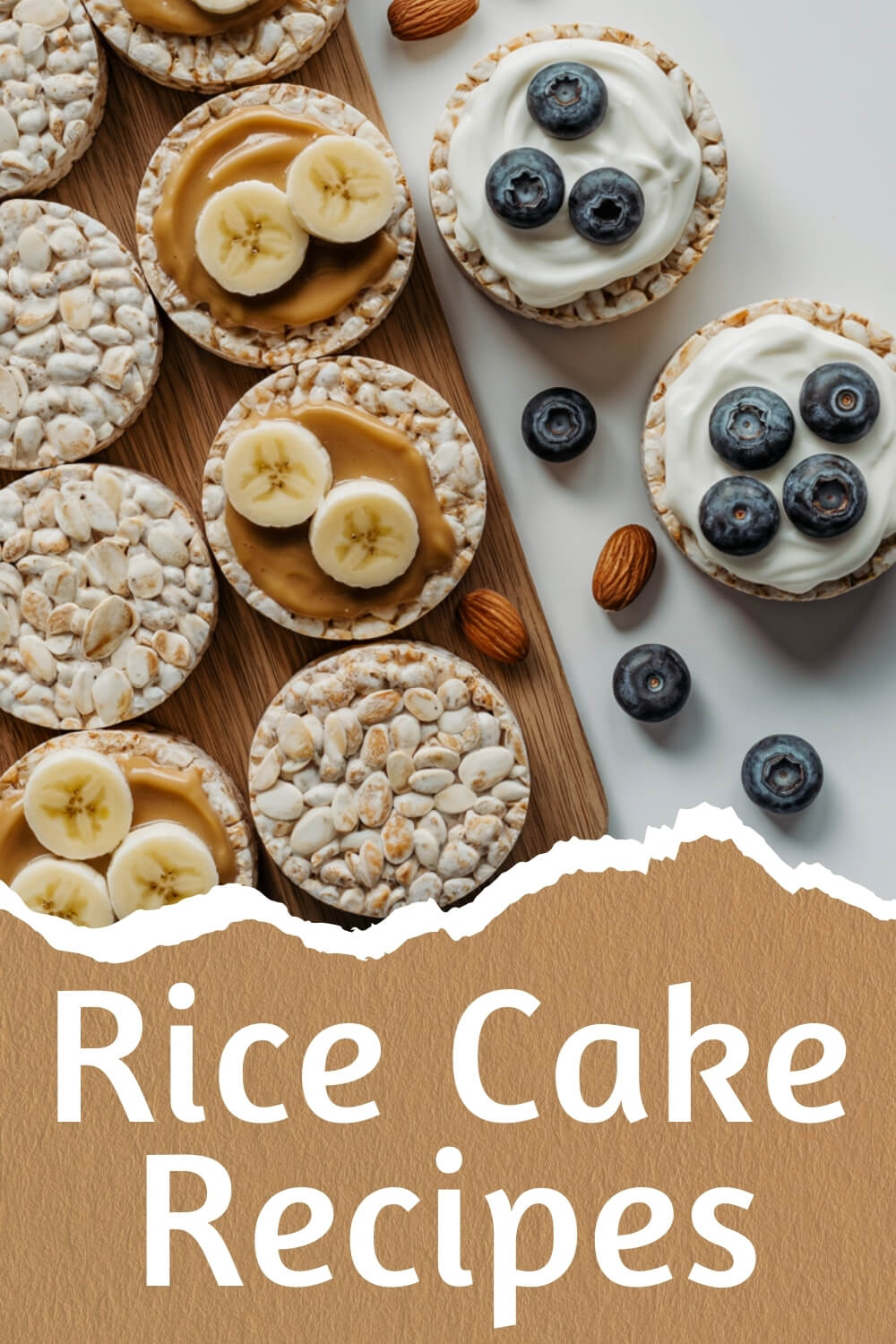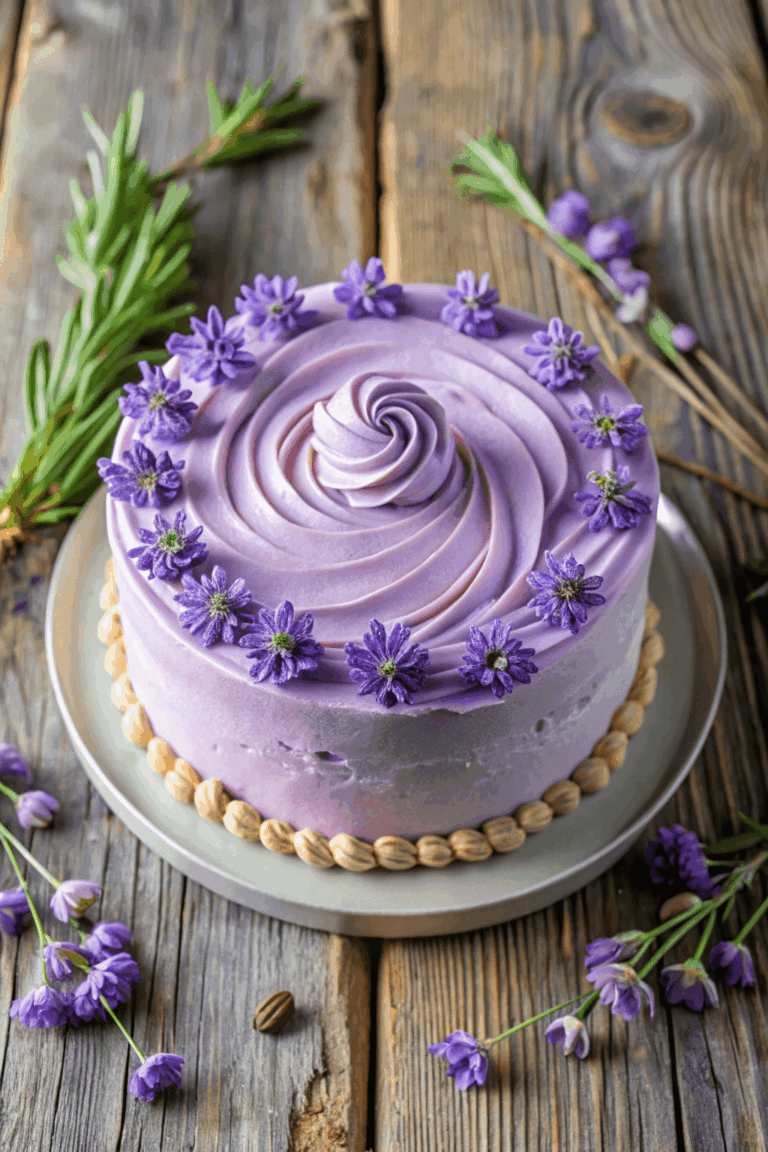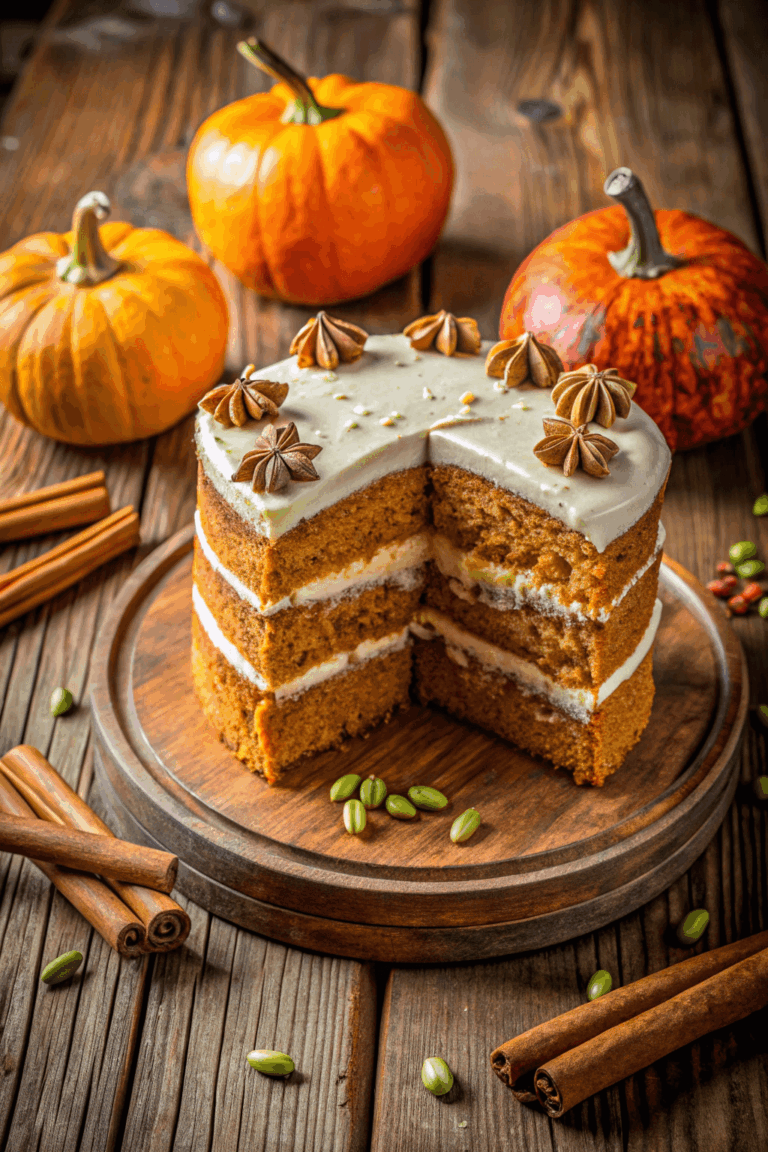The Best Fluffy Pancakes recipe you will fall in love with. Full of tips and tricks to help you make the best pancakes.
Korean Garaetteok Rice Cake Recipe
There are days when all I want is something chewy and satisfying that hugs my insides without a lot of bells and whistles. You know what does that perfectly?
Korean rice cakes. I’m talking about those soft, bouncy logs of pure comfort—no sauce, no stir-fry, just the humble rice cake in its most glorious form. It’s like the carb equivalent of a weighted blanket.
If you’ve had tteokbokki and secretly wished you could hoard the rice cakes without sharing them with the sauce, this one’s for you. Making garaetteok from scratch might sound like you’re signing up for a kitchen workout (and hey, your arms will feel it), but trust me, it’s easier than you think.
No fancy ingredients, just rice flour, hot water, and a little muscle power. Let’s get our hands sticky and dive into the magic of making chewy rice cakes at home!
Recipe Snapshot
| Category | Details |
| Yield | About 450g (1 pound) rice cake |
| Serving Size | Varies based on dish |
| Prep Time | 20 minutes (excluding flour prep) |
| Cook Time | 20–25 minutes |
| Total Time | ~45 minutes |
| Calories per Serving | ~180 |
| Primary Cooking Method | Steaming or Microwaving |
| Cooling Time | 1 hour (for soup version, optional) |
| Occasion | Everyday meals, Korean celebrations |
| Diet Type | Gluten-Free |
Calories are approximate and may vary depending on exact ingredients used.
Rice Cake Recipe
Course: DessertCuisine: KoreanDifficulty: Easy1
dish20
minutes20
minutes180
kcalThis rice cake recipe is the chewy, pillowy base for some of Korea’s most loved comfort dishes—especially tteokbokki. But even on its own, this stuff is dangerously snackable. Think of it as the Korean version of pasta dough: just rice flour, a bit of salt, hot water, and elbow grease.
Ingredients
- For Homemade Rice Flour
2.5 cups short or medium grain rice (e.g. sushi rice)
- For Microwave Rice Cake Version
2 cups wet-milled rice flour (300g)
1 Tbsp cornstarch
1 tsp fine salt
3/4 cup boiling water (divided into three sets of 1/4 cups)
1/2 tsp sesame oil (for shaping and coating)
- For Steamer Rice Cake Version
2 cups wet-milled rice flour (300g
1 Tbsp cornstarch
1 tsp fine salt
2/3 cup boiling water
1/2 tsp sesame oil (for shaping and coating)
Directions
- How to Make Rice Flour (If Making from Scratch)
- Step 1: Wash and Soak the Rice
Start with 2.5 cups of short or medium grain rice—think sushi rice. Rinse it thoroughly under cold water until the water runs clear. This gets rid of any excess starch and ensures a cleaner flour. Once rinsed, soak the rice in fresh water for at least 12 hours or overnight. - Step 2: Drain and Air Dry
After soaking, drain the rice completely and spread it out on a clean towel or tray. Let it air dry for about 1 hour. This step is crucial to prevent clumping during grinding. - Step 3: Grind into Flour
Transfer the dried rice into a powerful food processor. Blend for about 6 minutes, scraping the sides occasionally, until the texture becomes fine and powdery—like snow. - Step 4: Sift Thoroughly
Sift the flour through a fine mesh sieve in batches. This helps remove any larger granules or unground grains. Repeat the sifting process twice for an ultra-fine texture. Regrind any coarse bits and sift again. - How to Make Rice Cake with a Microwave
- Step 1: Mix the Ingredients
In a microwave-safe bowl, add 2 cups of your rice flour, 1 tablespoon cornstarch, and 1 teaspoon salt. Pour in 1/4 cup of boiling water and stir until absorbed. Then add another 1/4 cup of boiling water and stir again until you have a smooth, cohesive dough. - Step 2: Microwave in Phases
Cover the bowl with cling wrap (leave a small vent) and microwave for 2 minutes on high. Carefully remove the bowl—it’s hot! Stir in the remaining 1/4 cup of boiling water, re-cover, and microwave for another 1 minute and 30 seconds. - Step 3: Knead the Dough
Transfer the hot dough onto a silicone mat or cling wrap-covered board. Put on heat-resistant gloves under food-safe gloves and knead for about 5 minutes. Use a pestle to pound the dough for extra elasticity. - How to Make Rice Cake with a Steamer
- Step 1: Form the Dough
In a mixing bowl, combine 2 cups of rice flour, 1 tablespoon cornstarch, and 1 teaspoon salt. Pour in 2/3 cup of boiling water. Stir until it becomes a soft dough. - Step 2: Steam the Dough
Line your steamer with baking paper or a clean cloth. Place the dough in the steamer, flatten it slightly, and cover. Steam on high heat for 20 minutes. Don’t lift the lid mid-way—keep that steam in! - Step 3: Knead and Shape
Once done, remove the hot dough and transfer to your prep surface. Wearing double gloves again, knead and pound with a pestle for about 5 minutes until it’s soft, smooth, and stretchy. - How to Prepare Rice Cake for Tteokbokki
- Step 1: Divide and Oil
Divide the dough into 5 equal parts. Drizzle a bit of sesame oil onto your palms and gently coat each piece to prevent sticking. - Step 2: Shape and Cut
Roll each portion into a log about 1–1.5 cm in diameter. Trim the ends neatly, then cut each log into 6 cm lengths—think finger-sized perfection. These are your classic tteokbokki rice cakes! - How to Prepare Rice Cake for Tteokguk (Rice Cake Soup)
- Step 1: Form Thick Logs
Split the dough into 2 parts. Oil your hands with sesame oil and shape each piece into a thicker log, about 2–3 cm in diameter. - Step 2: Chill and Slice
Place the logs on a large plate and cover with cling wrap. Chill them in the fridge for an hour to firm them up for easier slicing. If you’re in a hurry, you can slice immediately. - Step 3: Create Oval Slices
Using a sharp knife, slice each log diagonally into thin ovals about 0.5 cm thick. These are perfect for soup—soft, chewy, and easy to slurp.
Extra Tips
- Use a silicone baking mat or multiple layers of cling wrap when kneading and shaping to prevent the dough from sticking.
- Don’t skip the kneading and pounding step—it’s key to getting that signature chew.
- If the dough feels too dry while mixing, add hot water a teaspoon at a time.
- Oil your hands before shaping to make the process smoother and mess-free.
- For a hint of flavor, swap neutral oil for toasted sesame oil, but use sparingly to avoid overpowering the dish.
- Want perfectly uniform rice cakes? Use a ruler and a sharp knife or kitchen scissors for cutting.
- Always let rice cakes cool completely before wrapping and storing to prevent excess moisture and sogginess.
Equipment List
- Heatproof mixing bowl
- Steamer with lid
- Plastic wrap or heatproof cover
- Silicone spatula or spoon
- Clean kneading surface
- Rolling surface (cutting board or countertop)
- Knife (if slicing after cooling)
Substitution Options
Don’t have wet-milled rice flour? You can still make this recipe work. Use regular rice flour (like Bob’s Red Mill white rice flour), but sift it well to mimic the texture. If you can only find glutinous rice flour (often labeled as “sweet rice flour”), avoid using it for this specific recipe—it will make your rice cakes too sticky and mochi-like instead of chewy and firm.
Need a low-sodium option? You can skip the salt or use a low-sodium sea salt alternative. It won’t drastically change the texture, though it may slightly mute the flavor. Want to add a little twist? Some folks mix in a few drops of sesame oil instead of neutral oil during kneading for a subtle nutty aroma—just keep in mind it will change the flavor slightly.
For those avoiding oil entirely, you can knead with slightly wet hands to prevent sticking. And if you’re steering clear of plastic wrap, cover your dough with a clean kitchen towel or parchment paper while steaming and cooling. Still works like a charm.
Make-Ahead Tips
- Shape and cool your rice cake logs ahead of time.
- Wrap each log tightly in plastic wrap and store in the fridge for up to 3 days.
- Ensure they are sealed properly to maintain moisture and texture.
- For longer storage, place wrapped logs in a zip-top bag and freeze for up to 1 month.
- When ready to use, thaw in the fridge overnight or at room temperature for a couple of hours.
- Reheat by steaming or pan-toasting with a splash of water for a fresh, chewy texture.
Storage Instructions
Rice cakes are truly at their best when eaten fresh—soft, chewy, and warm from the steamer or microwave. That first-day texture is unbeatable. But hey, life gets busy, and making ahead can be a lifesaver. If you do need to store them, here’s how to keep things tasty.
After letting them cool completely, slice your rice cakes to your desired size. Then, pop them into a sealed ziplock or airtight plastic bag and freeze. They’ll stay good in the freezer for up to one month. When it’s time to indulge, just let them thaw naturally at room temperature or in the fridge. A quick steam or a flash pan-fry with a splash of water will revive that signature chew.
One thing to avoid? Stashing them in the fridge without freezing. That’ll turn them dense and dry. Stick to freezing for best results—or just eat them all on day one. No judgment!
FAQ Section
Can I use store-bought rice flour instead of making my own?
Yes, absolutely! While homemade wet-milled rice flour gives the best texture, store-bought rice flour can work in a pinch. Just make sure it’s from short or medium grain rice and not glutinous rice flour.
How do I keep my rice cakes from cracking when rolling?
Make sure the dough is still warm when you start shaping. If it cools too much, it becomes less pliable. Lightly oiling your hands or adding a tiny splash of warm water helps keep things smooth.
Why do my rice cakes turn hard after a day in the fridge?
They harden because rice starch crystallizes in cold temperatures. That’s why freezing is a better option for storage. When you’re ready to eat, re-steam or sauté them to bring back the chewiness.
Can I use a stand mixer instead of kneading by hand?
Not really. This dough needs the pressure and pounding that only hand-kneading (or pestle pounding) can deliver. Think of it as a mini arm workout!
Is it okay to skip the sesame oil?
Yes, the sesame oil is optional and mostly used for shaping and adding a light nutty aroma. You can use neutral oil or none at all—just be prepared for a stickier dough during shaping.

Nutritional Information
Per Serving (based on 4 servings per batch): Calories: 305 kcal | Carbohydrates: 66g | Protein: 5g | Fat: 2g | Saturated Fat: 1g | Sodium: 586mg | Potassium: 61mg | Fiber: 2g | Sugar: 1g | Calcium: 11mg | Iron: 1mg
The nutrition information shown is an estimate provided by an online nutrition calculator. It should not be considered a substitute for a professional nutritionist’s advice.
Final Thoughts
Let’s be real—once you make these rice cakes from scratch, you’ll feel like a kitchen boss. It’s one of those hands-on, feels-good recipes that might look simple but delivers major comfort. Whether you go the steamer route for tradition or speed things up with the microwave, the chewy goodness at the end is totally worth it.
Plus, the versatility? Chef’s kiss. Tteokbokki, tteokguk, pan-fried snacks—you name it, they’re ready. So grab your rice flour, roll up your sleeves, and let’s bring that bounce into our kitchens. Homemade garaetteok forever!





